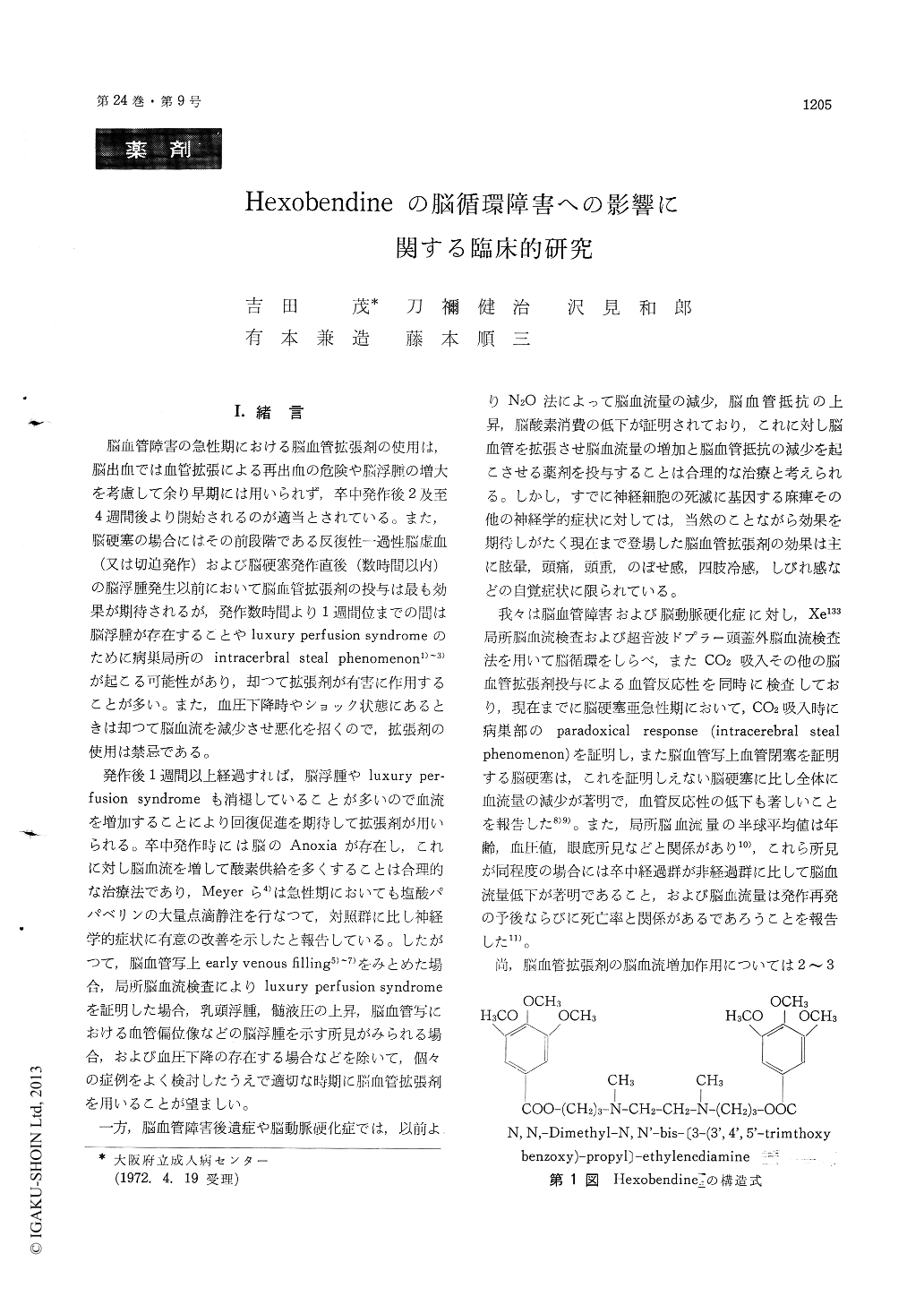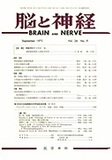Japanese
English
- 有料閲覧
- Abstract 文献概要
- 1ページ目 Look Inside
I.緒言
脳血管障害の急性期における脳血管拡張剤の使用は,脳出血では血管拡張による再出血の危険や脳浮腫の増大を考慮して余り早期には用いられず,卒中発作後2及至4週間後より開始されるのが適当とされている。また,脳硬塞の場合にはその前段階である反復性一過性脳虚血 (又は切迫発作)および脳硬塞発作直後(数時間以内)の脳浮腫発生以前において脳血管拡張剤の投与は最も効果が期待されるが,発作数時間より1週間位までの間は脳浮腫が存在することやluxury perfusion syndromeのために病巣局所のintracerbral steal phenomenon1)〜3)が起こる可能性があり,却つて拡張剤が有害に作用することが多い。また,血圧下降時やショック状態にあるときは却つて脳血流を減少させ悪化を招くので,拡張剤の使用は禁忌である。
発作後1週間以上経過すれば,脳浮腫やluxury per—fusion syndromeも消褪していることが多いので血流を増加することにより回復促進を期待して拡張剤が用いられる。卒中発作時には脳のAnoxiaが存在し,これに対し脳血流を増して酸素供給を多くすることは合理的な治療法であり,Meyerら4)は急性期においても塩酸パパベリンの大量点滴静注を行なつて,対照群に比し神経学的症状に有意の改善を示したと報告している。したがつて,脳血管写上early venous filling5)〜7)をみとめた場合,局所脳血流検査によりluxury perfusion syndromeを証明した場合,乳頭浮腫,髄液圧の上昇,脳血管写における血管偏位像などの脳浮腫を示す所見がみられる場合,および血圧下降の存在する場合などを除いて,個々の症例をよく検討したうえで適切な時期に脳血管拡張剤を用いることが望ましい。
Effect of hexobendine on cerebral circulation was examined by measurement of regional cerebral blood flow (rCBF) and internal carotid blood flow (A/L). Clinical effects of the drug were also tested in cerebrovascular disease.
1) Following intravenous injection of about 10 mg of hexobendine, rCBF measured by Xe133 arterial injection method, increased significantly in 14 of 17 cases with cerebrovascular disease and other diseases.
2) A/L increased in 16 of 20 cases after intra-venous injection of hexobendine without increase of amplitude of pulse wave on finger tip as an index of peripheral blood flow.
3) Clinical improvements were found in 25 of 38 cases with cerebrovascular disease and other disease after oral administration of hexobendine in dose of 180mg daily. No serious side effects were en-countered during oral or intravenous administra-tion of the drug.

Copyright © 1972, Igaku-Shoin Ltd. All rights reserved.


